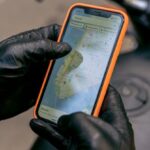Navigational technology has come a long way from the days of relying solely on traditional tools like maps, compasses, and sextants. With the advent of GPS (Global Positioning System), navigating from point A to point B has become a much simpler and more efficient process. While both GPS and traditional navigational tools serve the same purpose of helping individuals determine their location and reach their destinations, there are significant differences between the two that set them apart.
Accuracy and Precision
One of the most notable differences between GPS and traditional navigational tools is the level of accuracy and precision they offer. Traditional tools like maps and compasses rely on individuals’ interpretation and understanding of the information presented. This can sometimes lead to errors in navigation, especially in unfamiliar or complex terrains. GPS, on the other hand, provides precise location data with an accuracy of a few meters, thanks to a network of satellites orbiting the Earth. This high level of accuracy makes GPS a more reliable option for navigation in various situations.
Ease of Use
Another key difference between GPS and traditional navigational tools is the ease of use. Traditional tools often require a certain level of skill and expertise to use effectively. For example, reading a map or using a compass correctly can be challenging for individuals who are not familiar with these tools. In contrast, GPS devices are designed to be user-friendly, with intuitive interfaces and features that make navigation straightforward for users of all levels of experience. This ease of use has made GPS the preferred choice for many people who require reliable navigation in their daily lives.
Real-Time Tracking
One of the most significant advantages of GPS over traditional navigational tools is the ability to provide real-time tracking. With GPS, users can track their movements and progress continuously, allowing for adjustments to be made quickly if needed. This real-time tracking feature is particularly valuable in situations where accurate and up-to-date location information is crucial, such as emergency response operations or outdoor activities like hiking and camping. Traditional tools, while effective in providing general navigation guidance, lack the real-time tracking capabilities that GPS offers.
Versatility and Flexibility
GPS technology offers a level of versatility and flexibility that traditional navigational tools cannot match. GPS devices can be used in a wide range of environments and situations, from navigating urban streets to exploring remote wilderness areas. Additionally, GPS can provide additional information beyond just location data, such as estimated arrival times, alternate routes, and points of interest along the way. This versatility makes GPS a valuable tool for a variety of applications, including transportation, logistics, and outdoor recreation.
Cost and Accessibility
While GPS devices have become more affordable and accessible in recent years, traditional navigational tools still have an advantage in terms of cost and accessibility. Maps and compasses are widely available at relatively low prices, making them a practical option for individuals who prefer a more traditional approach to navigation. Additionally, traditional tools do not require batteries or electronic components, making them reliable and accessible in remote or off-grid locations where GPS signals may be limited or unavailable.
In Conclusion…
While both GPS and traditional navigational tools serve the same basic purpose of helping individuals find their way, the differences between the two are significant. GPS offers unparalleled accuracy, real-time tracking, ease of use, versatility, and flexibility, making it a preferred choice for many people in various situations. However, traditional tools have their advantages in terms of cost, accessibility, and reliability in certain environments. Ultimately, the choice between GPS and traditional navigational tools depends on individual preferences, needs, and the specific requirements of the navigation task at hand.





